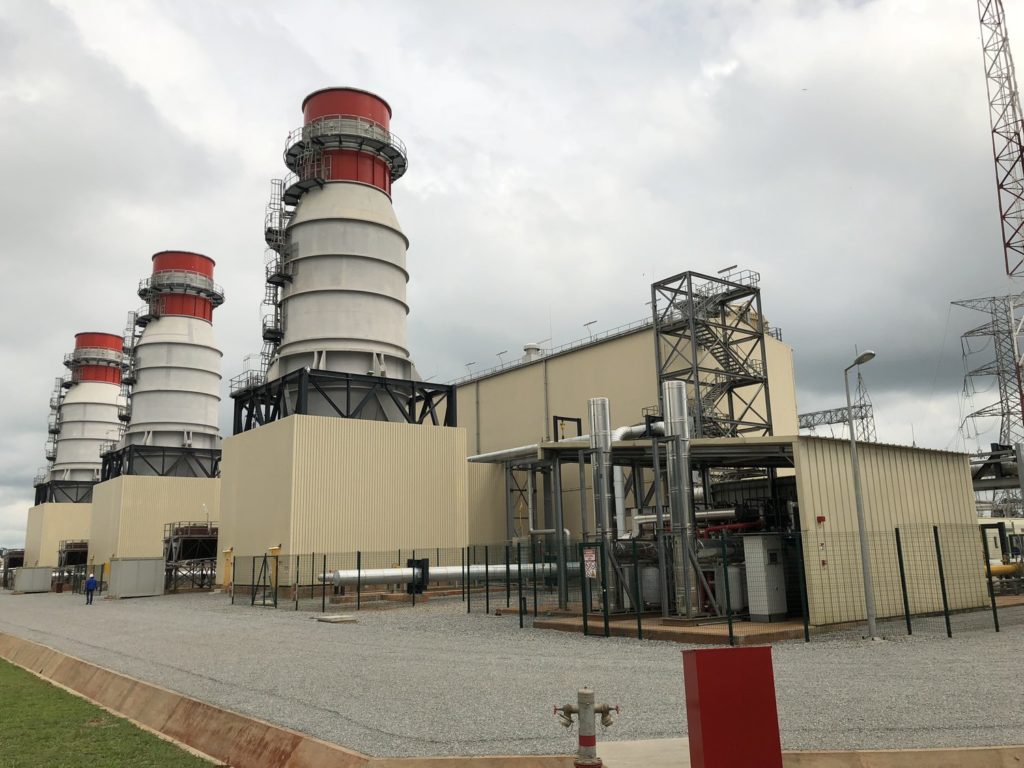- Your cart is empty
- Continue Shopping

Illuminating the Niger Area 2004-2020: A Chronicle of Nigeria and Her Power Sector Reforms (Part 3)
By Oti Francis
Welcome to this week’s Energy Feeds. This article is a continuation of our series on Nigeria and her Power Sector Reforms. The content purpose is to inform and educate EnergyHub customers, and visitors who have various business interests or investment plans for Nigeria’s power sector.
In the past two weeks, we have examined the various electricity industry reforms from the Obasanjo Era (1999-2007) to the Yar’Adua administration (2007-2010).
The Obasanjo government successfully passed the Electric Power Sector Reform Act (EPSRA). This was expected to create the momentum needed to transfer the assets of the age-long power monopoly NEPA to the Power Holding Company of Nigeria (PHCN), a sort of special purpose vehicle to be unbundled into eighteen corporate entities.
However, several of the Obasanjo era strides in power sector reform were either halted or reversed by Yar’Adua’s administration who felt the previous administration was imprudent with the over 10 billion dollar power sector capital investment. Before his untimely death, Yar’Adua would also fault the procedures of the Obasanjo administration in privatizing the power sector, halt the process and then call for a review of the plan.
Goodluck Ebele Jonathan
Upon the untimely exit of the late President Yar’Adua, his vice Dr. Goodluck Ebele Jonathan took over the baton. Goodluck was not a new face to the game plan. He had chaired the National Economic Council and also replicated this same role in the National Council on Privatization. He had firsthand knowledge of the blueprints of the Electricity Sector Road Map and the visions of the Power Sector Master Plan. In the shoes of his former boss, Goodluck Jonathan was going to navigate troubling waters. He must avoid the blame game template as well as the forces that plagued past administrations to deliver electricity in the best way possible.
Surprisingly, Jonathan adopted the template designed by the Obasanjo Era. Power sector privatization was an inevitable task and Jonathan was vocal about seeing it to fruition. He was able to bypass the red tape to deliver quick reforms and policy implementation plans like the Power Sector Transformation Plan. This would set the 2005 Electric Power Sector Reform Act (EPSRA) into full action. Jonathan would then make investments in power sector infrastructure and policies preparing the ground for private sector participation.
Jonathan’s transformation agenda seemed blurry to many until he commenced and completed infrastructure upgrades in several power plants in the country. The Azura-Edo power plant was a product of Jonathan’s privatization agenda. It would become the nation’s first private-sector owned power plant, totally independent in a corporate and administrative sense. He finalized all outstanding processes obstructing the unbundling of the 18 companies from the PHCN, which included selling off the government’s major stakes (60per cent). The companies included eleven power distribution companies (the Discos), and six Generation Companies (the Gencos). The Transmission Company remained under the jurisdiction of the Federal Government. But its management would be awarded in a $24 million three-year contract in 2013 to the Canadian company Manitoba Hydro International.
The sale of the 17 companies (Gencos and Discos) to private investors was consummated in a deal worth over $3 billion. Interests of the Nigerian Federal Government were represented by her Bureau of Public Enterprises. This development also created more investment opportunities in Nigeria’s gas industry.
Three years after accepting the mantle, Jonathan’s efforts had driven the power sector’s generation installation capacity to over 12,000 MW. But the available capacity which was about 7,000 MW was still not sufficient. So while the national transmission was at around 7000 MW, distribution was 5000 MW. Jonathan had met a paltry 2000 MW in 2011.
Empowered with an act and a template, the Jonathan administration was able to give form to the privatization process. The Electric Power Sector Reform 2005 Act was intelligent in itself and also made provisions for review of the privatization process and adjustments.
Moreover, the achievements were not enough to foster the continuity of his tenure. His attempt at getting reelected in the 2015 polls would fail and then stall future commitments and investments in transforming the power sector. He lost to Muhammad Buhari. A new administration was coming to be with a new agenda. Jonathan’s privatization processes and Manitoba deal would be probed by the members of the new National Assembly in December 2016. The allegation was that due process was not followed in the sale.

Muhammad Buhari 2015
President Buhari on his part was determined to deliver 40, 000MW in 8 years (two terms). This was double the promise made by the late Yar’Adua.
He appointed a former Lagos state governor, Babatunde Fashola to head the Ministry of Power, Housing, and Works. In his speech, “Nigeria’s electricity challenges, a road map for change” Fashola expressed his dissatisfaction with the electricity industry.
He also cited the need to discontinue the maintenance culture that had plagued the sector’s capacity to deliver. He mentioned the vandalism of energy distribution assets like pipelines and transformers, including unpaid electricity bills, unmetered electricity consumption, as some of the factors that negatively affected power generation and distribution capacity.
In the quest for incremental power, we must not overlook the things we have done poorly in the past. They range from improperly erected distribution poles, characterized by poor quality materials, poor workmanship, and poor standards by local and foreign contractors who were employed to deliver the services and did not give us value for money.
Babatunde Fashola, Minister for Power, Housing and Works on “Nigeria’s electricity challenges, a road map for change” in 2016
Reminiscent of Yar’Adua’s decisions, Buhari’s move was to sign a six-year contract with German company Siemens. The firm was to handle a three-phased upgrade and technical installation that would yield about 25000 MW. But like previous administrations, the Buhari team was also concerned about initiating probes of accountability and heaping blames on its predecessors.
Reports were that the Nigerian power sector had gulped over six trillion dollars since 1999. But there were no tangible results to show for such investments. Homes and industries still relied on generators to meet their electricity needs. This has caused a massive exodus of companies from Nigeria.
Energizing Economies Programmes
Moreover, Buhari was still prepared to ride on the reins of the Rural Electrification Agency, an agency created by the 2005 ESPRA Act. He kicked off a public-private partnership in 2017 called the Energizing Economies Programme to supply stable electricity across commercial centres and market zones across the nation. He also drove the initiative of the over one trillion naira Assurance programme to ease Gencos and gas suppliers’ access to liquidity and minimize their losses.
The news was that the Gencos were suffering incessant loss because Discos were not efficient and transparent in their distribution of generated electricity. The Discos would reply that it was the consumers who were not paying for electricity consumption. The government then stepped in to subsidize the incurred losses by paying Gencos the aforementioned 1.3 trillion naira for undistributed power. The intervention was eating into the government purse as the power supply was still not improving.
Muhammad Buhari 2019 till date
After a successful reelection attempt in 2019, Buhari appoints Engr. Saleh Mamman as the Minister of Power. Under Mamman’s leadership, the Ministry introduced a distribution policy called the Willing Buyer, Willing Seller. This policy was necessary to ensure all investments in power generation and distribution were compensated with adequate returns.
This means that the barricades stopping GenCos and DisCos from getting paid would be lifted and electricity will be supplied to communities and industries willing to settle their electricity bills. Under this new policy, loss of investments will be curtailed and GenCos will be assured of getting full payments for electricity services rendered. According to the Minister, it will also discourage inefficiencies and corrupt practices which have prevented the sector from rising to its true potential.
This full potential shines in its promise of improved power supply. But it may also come with a sacrifice. Looking at the cost of power generation in Nigeria, consumers will have to prepare for an upward review in electricity billing. The growth trajectory of Nigeria’s Power Sector is a clear indication that change is inevitable. The sector has had to confront a lot as it embraces the reforms that will open her up to necessary changes: The government need not spend so much in areas where private players can deliver much more efficiently.
It seems, therefore, that this full potential of Nigeria’s power sector lies in the hands of private participation, and perhaps, a reduction of politicization of the power sector. Reforming the power sector is necessary to kick start the discussion for growth where a healthy competition can yield the improvement the industry requires.
The Willing Seller, Willing Buyer policy opens the gates of the Nigerian power sector to many industry players and consumers who desire valuable returns for every investment made.
